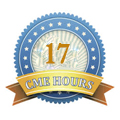
Sediqe Ebrahimipour
Birjand University, Iran
Title: The prevalence of musculoskeletal disorders among dental practitioners
Biography
Biography: Sediqe Ebrahimipour
Abstract
Musculoskeletal disorders among dentists that caused due to physical conditions during dental procedures have become a serious health threat and impose many complications and heavy costs to the dentist and thus the community. In order to avoid these complications it is necessary to be known and be tackled the causative and predisposing factors. This study deals with the prevalence of occupational complications of dentists and its relation with some indicators. In this cross-sectional study, 116 dentists who were attended in a continuing education program were participated. A questionnaire consisted of three parts were distributed, 1) individual and demographic data 2) characteristics and professional history and 3) the presence or absence of pain in different parts of the body. The questionnaires were collected on the same day. Then the data were entered into the SPSS 18 software and were analyzed using descriptive statistics and Mann-Whitney and Kruskal-Wallis tests at 0.05 significant levels. 116 Dentists with an average age of 37/7 years participated in the study. 50% were male and 50% were female. 87 dentists (75%) had a painful disorder associated with musculoskeletal system, and only 29 dentists (25%) reported no pain. The highest incidence of disorders were in order: the neck pain (56.9%), shoulders pain (43.1%), back pain (43.1%), hand/wrist pain (28.4%) and hand/fingers pain (26.7%). The average number of painful limbs in each dentist was 2.71±2.1. 34.5% were currently under treatment. Data analysis revealed no significant differences in musculoskeletal disorders of studied population based on gender, work experience; work hours per day, using the dental assistant and the exercise. Considering the high prevalence of musculoskeletal disorders among dental practitioners and lack of knowledge with ergonomic principles, it seems that education modification and optimization of working environment and dental equipments, so that is proportional to the limitations and capabilities of individuals, should be included in the curriculum of dental students; and it should be continued during regular courses as preventive education and physical therapy as well as the measures taken for getting familiar with the new materials and modern equipments.

